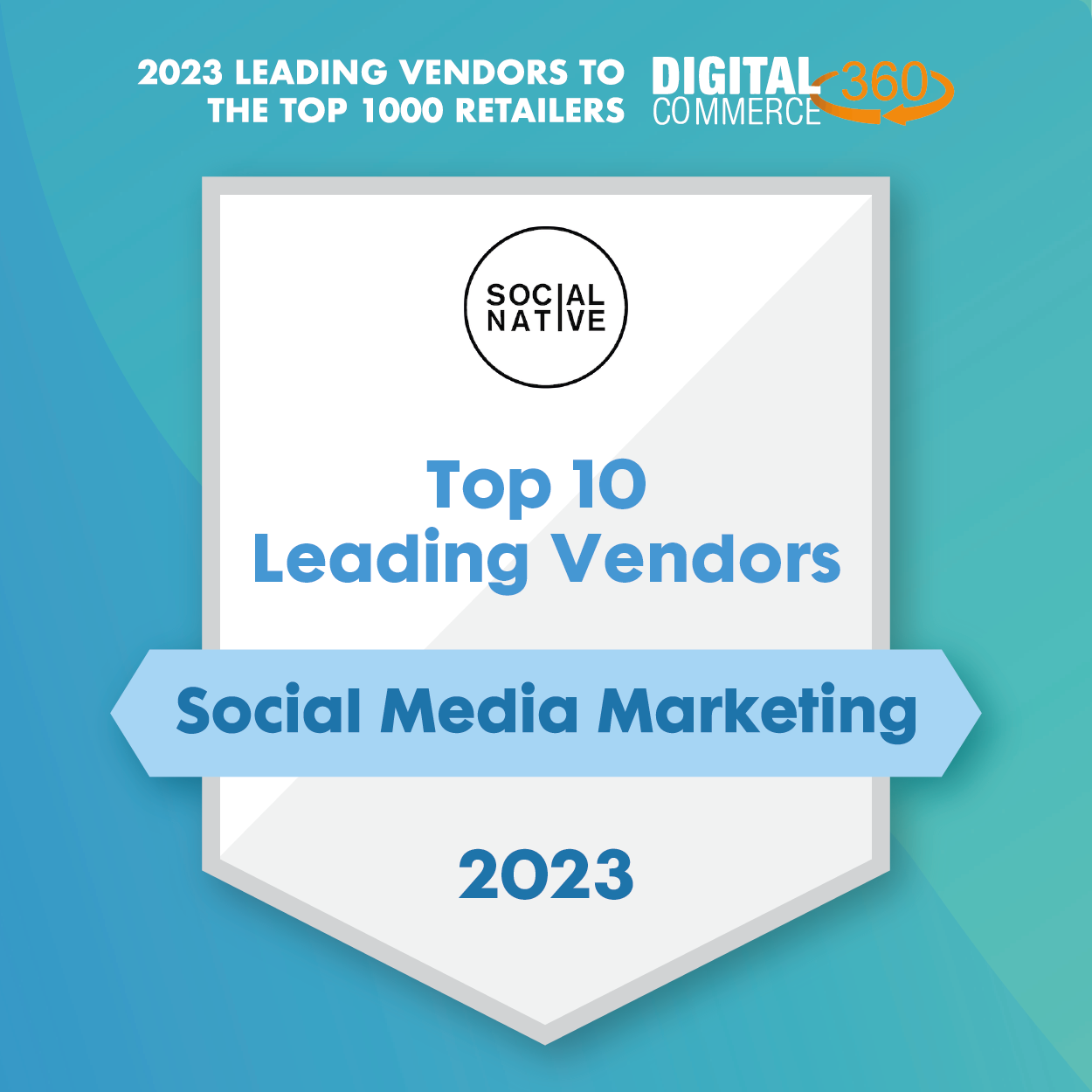In a world where social media shapes choices, creators have become the driving force shaping consumer decisions. As we enter 2024, the creator economy predictions transcend mere buzzwords, evolving into a thriving industry set to redefine marketing strategies. Currently valued at $250 billion, this economic powerhouse is projected to skyrocket to an impressive $480 billion by 2027¹, fueled by the surge in digital media consumption and groundbreaking technologies that have dismantled barriers to content creation.
The creator economy is no longer confined to the periphery of marketing strategies. In 2024, it takes center stage, seamlessly woven into marketing plans. As creators turn passions into careers, the creator economy is asserting itself as an unstoppable force, transforming the business landscape. Building strong creator relationships is no longer optional; it’s a success prerequisite.
This article explores the top creator economy predictions for 2024 that marketers need to embrace. From evolving content creation to strategic alliances, these insights offer a glimpse into the exciting future of the creator economy. Join us as we navigate trends and unlock potential in this dynamic, ever-expanding landscape.
2024 Creator Economy Predictions
1. A new era for micro-influencers emerges
In the 2024 creator economy, the resurgence of micro and nano influencers is on the horizon. Small and medium-sized businesses are prioritizing micro-creators, but why? Mostly, micro-creators are becoming crucial for brands as they help maximize impact on social media without breaking the bank.
But working with micro-influencers isn’t just about saving money. Recent studies reveal they engage 60% more than bigger names. This means brands can connect better with their audience, making the impact more meaningful. Micro-influencers have a special strength – they’re very close to their followers. This creates a real and strong link between the brand and its customers. It’s not just about money; partnering with micro-influencers is a smart move. It’s a way for brands to get more from their investment, gain loyal customers, and build credibility in specific communities.
The fashion industry, in particular, rocks this partnership. Micro and nano influencers help them speak directly to specific groups, making their message more powerful within their target audience. It’s clear that micro-influencers bring not just savings but authenticity to the vibrant future of the creator economy.


2. Specialized and niche influencers will take center stage
As social media becomes saturated with influencers, the need to carve out a unique niche and value proposition becomes paramount. For influencers, the key to success lies in standing out, catching a brand’s eye, and increasing the likelihood of collaborating on impactful campaigns. Recognizing the importance of specialization, creators are choosing to delve further into their niche fields or refine their creation styles.
This tactical move results in creators injecting a fresh and distinctive flavor into the creator economy, aligning with the concept of ‘creative bravery‘ highlighted in TikTok’s ‘What’s Next Trend Report 2024‘. Such dedication to expertise fosters deeper community connections and reveals what people value.
By immersing themselves in their areas of expertise, creators bring more value, making collaborations with brands more compelling and authentic. The outcome is hyper-relevant, delightful, and useful content that piques every curiosity, even those you didn’t know you had. This strategic shift not only enhances collaboration opportunities but also lays the groundwork for longer-term partnerships with brands.
3. AI to play a more significant role in content creation
The emerging influence of AI technology is reshaping the creator economy, and 2024 is poised to fully embrace its potential. No longer a futuristic concept, AI is now a transformative force across various industries, including marketing and content creation. Its impact on enhancing marketing and creative performance, efficiency, and innovation is significant, mainly achieved through automation and data analysis.
Consider the rapid pace at which AI-based concepts are evolving, driven by emerging technologies in this space. This trend gains more traction in 2024, as the influencer marketing industry increasingly adopts AI technologies. Brands are urged to leverage AI not as a replacement for real creators and influencers but as a complement and support. For instance, AI can aid in finding creators, analyzing performance data, providing optimization recommendations, or enhancing images and video editing.
However, it’s crucial to recognize that AI cannot replace the creative vision, voice, and unique value that real creators and influencers bring to brands and consumers. Instead, it should be harnessed as a tool to augment and amplify the capabilities of human creators.
4. Long-form video content will resurge
In the realm of social media, short-form videos have long claimed the spotlight, dominating platforms like TikTok, Instagram Reels, and YouTube Shorts. These bite-sized videos have transformed the way we consume content. Yet the question arises: is long-form video content facing extinction? Not quite.
The landscape is once again evolving, seen in TikTok’s move to embrace longer-form content with videos up to 10 minutes. Additionally, the rise of livestreams and podcasts, plus the shift to YouTube for daily entertainment, affirms long-form content’s enduring popularity.
Short-form content obviously excels at swiftly capturing a broad audience, but this quick consumption doesn’t necessarily translate to viewer loyalty. So, instead of framing it as a competition between long-form and short-form, both offer complementary advantages. The evolving landscape of video content calls for an embrace of cross-platform strategies, acknowledging that each form has its unique role in engaging audiences in diverse ways. Which leads us to our next prediction…
5. Brace for a notable surge in cross-promotion opportunities
Amidst the surge in social media usage, especially among Gen Z audiences, the inclination to explore alternatives to Google search intensifies due to concerns about declining search quality. TikTok and Instagram emerge as the preferred choices³, marking a significant shift away from traditional search engines.
In light of this, creators are strategically redirecting their focus. Rather than delving into the complexities of Google’s algorithms, they are opting to diversify their traffic sources. The key lies in building a robust and authentic brand presence across multiple platforms. This not only offers a practical response to the uncertainties of search algorithms but also creates more opportunities for cross-promotion.
Cross-platform and cross-creator collaborations are poised to become increasingly prevalent. Creators are joining forces with others possessing complementary skills, such as crafting both videos and podcasts or sharing content on YouTube and TikTok. These collaborative efforts allow creators to tap into each other’s audiences, fostering creativity and expanding their reach to new viewers. The emphasis on cross-promotion becomes a strategic avenue for creators to adapt, thrive, and maximize their impact through a multi-platform presence.
6. The creator economy will solidify as a viable career path
As of 2024, the creator economy is stepping into the academic spotlight, shedding its image as a side effect of social media growth. It’s becoming a legitimate career choice with abundant options, and this shift is especially exciting for the 54% of young adults keen on diving into content creation, aligning seamlessly with Gen Z’s desire for career independence.
Leading institutions like UCLA and USC are already paving the way, offering courses in influencer marketing and relations. Notably, these classes don’t teach how to be a creator but instead provide a business-focused exploration of the creator economy. In essence, these courses start by unraveling the psychology of influence and navigating the intricate network of people and platforms surrounding creators. It’s a holistic approach, offering students a solid grasp of how the creator economy operates.
What makes this career path enticing is its challenge to traditional work, income generation, and entrepreneurial norms. It opens the door for anyone to pursue creativity, fostering a sustainable career while maintaining a direct and personal connection with followers.
Embracing the creative wave in 2024
As we navigate the dynamic landscape of 2024, the creator economy stands as a vibrant force shaping marketing strategies and content creation. The infusion of AI, the integration of long-form videos, and the recognition of the creator economy in academia are just glimpses of the transformative trends propelling this industry forward. It’s a shift that not only opens doors for aspiring creators but also revolutionizes how brands connect with their audiences.
To fully embrace the potential of the creator economy in 2024, consider leveraging Social Native. With our innovative solutions and technology, Social Native empowers brands to tap into the full-funnel value of authentic social content, enabling them to build meaningful relationships with both creators and audiences. So, let’s step into 2024 with creativity, collaboration, and a commitment to unleashing the boundless possibilities within the ever-evolving creator economy.
- Source: The creator economy could approach half-a-trillion dollars by 2027, Goldman Sachs (2023)
- Source: YouTube Culture & Trends Report, Ipsos (on behalf of YouTube), AU, BR, CAN, DE, EG, FR, IN, JP, KOR, KSA, MX, U.K., U.S. (2022) Online survey of individuals aged 18-24, n=5722.
- Source: 51% of Gen Z women prefer TikTok, not Google, for search, Search Engine Land (2023)









































